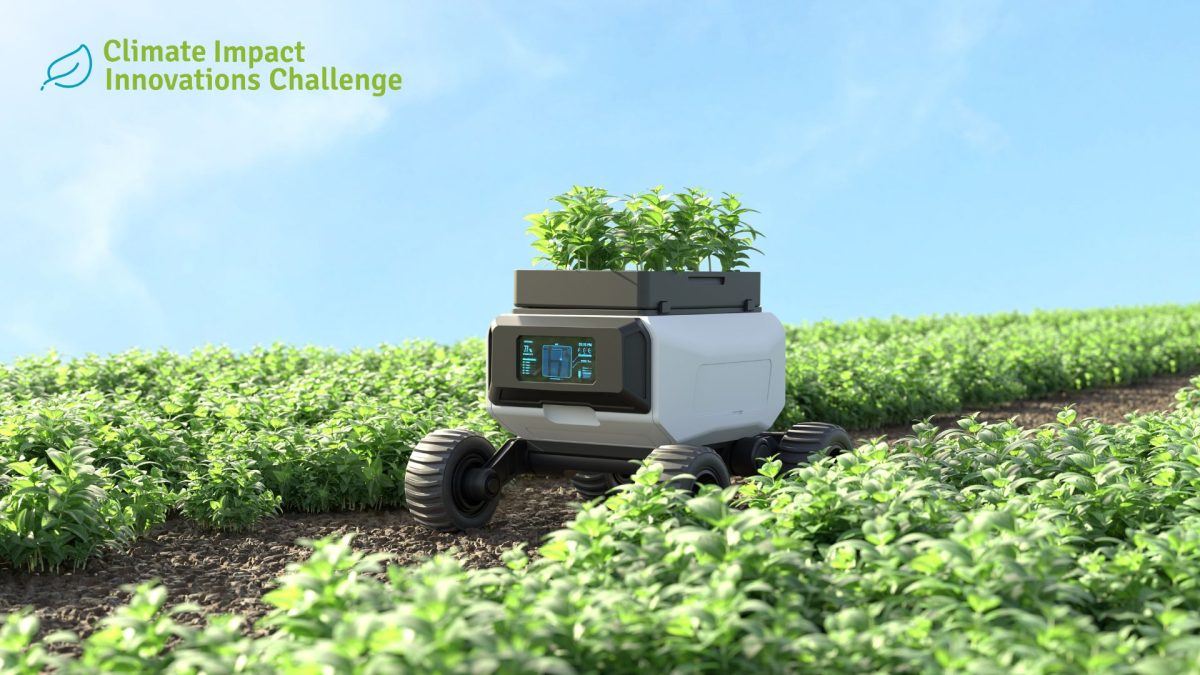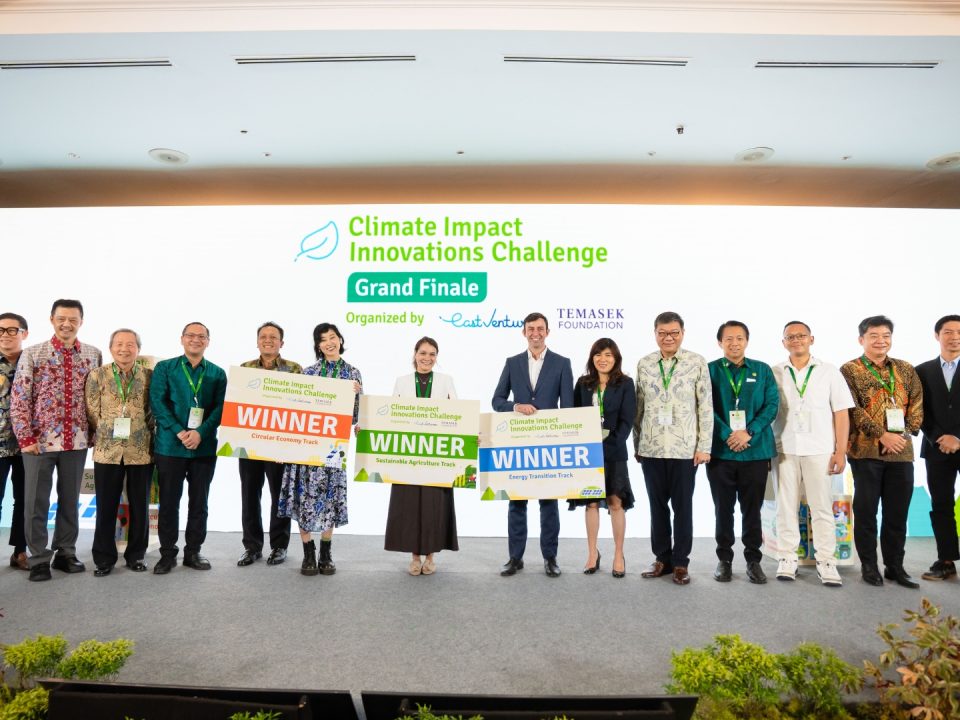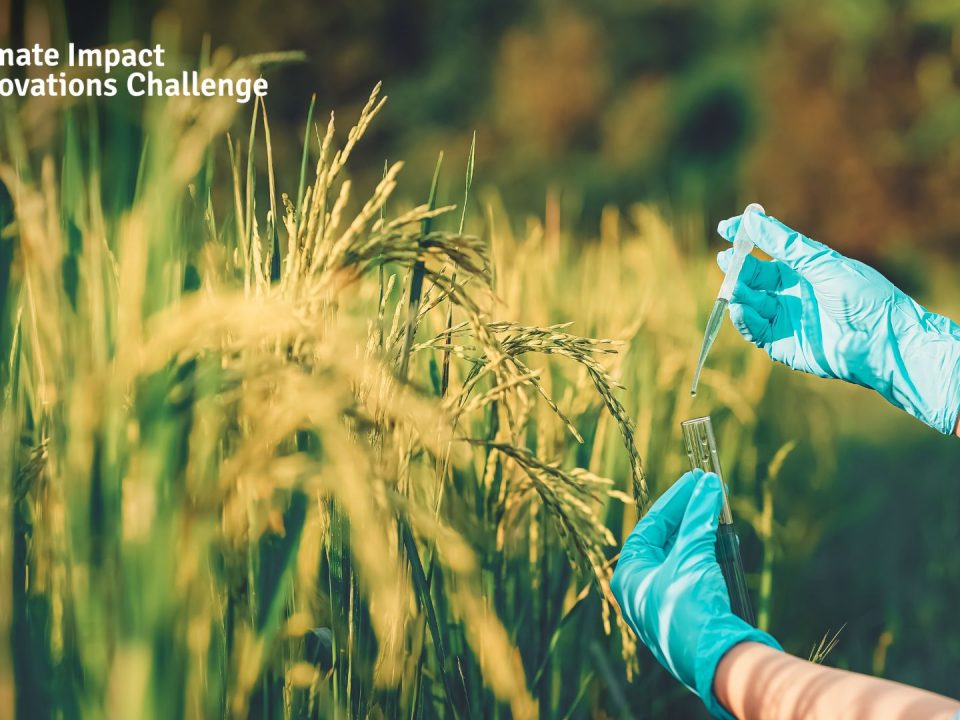
Walking the green talk: Jejakin’s impact on the carbon footprint reduction
May 22, 2025
Women-Powered Circular Economy for Flood-Resilient Cities: Turning Waste & Water into ShieldsAgainst Climate Disasters
June 19, 2025Smart Agriculture as A Pillar of Ecological Transition: The Contribution of Satellite Technology and AI for The Future of Food
Written by Yesrun Eka Setyobudi
The global agricultural system is facing unprecedented challenges driven by climate change, over-exploitation of resources, and the growing demand for food. According to the FAO (2023), the agricultural sector contributes about 31% of global greenhouse gas emissions, largely due to deforestation, livestock, and inefficient land use. In Indonesia, where agriculture plays a crucial role in the economy, the sector faces similar pressures.
According to the Indonesian Ministry of Agriculture, climate change has led to a 5-10% decline in rice production due to shifting rainfall patterns, highlighting the vulnerability of domestic farming to climate variability.
Moreover, with the global population expected to reach 9.7 billion by 2050, there is a pressing need to increase food production. Indonesia, with a population of over 270 million, must also enhance its food security to meet growing demand.
Innovative technologies like precision agriculture, supported by satellite technology and Artificial Intelligence (AI), can offer crucial solutions. According to a 2024 study by Farmonaut, the use of satellite and AI technologies in agriculture has resulted in a 20% increase in crop yields and a 30% reduction in water usage.
These technologies provide real-time data that helps Indonesian farmers monitor crop health, soil moisture, and pest threats more accurately, enabling them to manage their land more efficiently and sustainably.
The adoption of these technologies is increasingly relevant in Indonesia, where the government has been driving the digitalization of agriculture through initiatives such as the Agricultural Digital Transformation Program. Local governments and farming communities are integrating smart technologies to enhance agricultural productivity while minimizing environmental impact.
Through this, Indonesia can accelerate its transition to a more modern, efficient, and environmentally friendly agricultural system.
Precision Agriculture and Ecological Transition
Precision agriculture represents a paradigm shift in farming by integrating real-time data with advanced technologies. Through satellite imagery, sensors, and AI algorithms, farmers can monitor soil health, crop conditions, and environmental factors with unprecedented accuracy.
According to the Business Research Company, the market for AI in precision agriculture is expected to grow from US$0.78 billion in 2024 to US$0.94 billion in 2025, with a compound annual growth rate (CAGR) of 20.3%. This growth highlights the increasing reliance on data-driven farming solutions.
In Indonesia, precision agriculture is already showing substantial results. Platforms like Farmonaut have been used to monitor rice fields in East Java, reducing pesticide use by 30% and improving water use efficiency by 25%. The application of zone-based fertilization recommendations, driven by satellite data and AI, has reduced fertilizer consumption by 18% and minimized nutrient runoff into waterways.
Moreover, research from Universitas Gadjah Mada in 2024 has shown that precision agriculture methods can increase rice productivity by 12% per planting season and reduce nitrous oxide emissions by 14% compared to conventional farming practices.
The adoption of precision agriculture plays a crucial role in supporting the ecological transition, a shift from exploitative farming practices to more regenerative, environmentally friendly approaches. By minimizing the use of water, fertilizers, and pesticides, this technology helps reduce the environmental impact of farming, lowering greenhouse gas emissions, preventing soil erosion, and protecting biodiversity.
As such, smart agriculture is a key driver of sustainable food production and is integral to the goals of the Climate Impact Innovations Challenge (CIIC) 2025, which focuses on fostering a low-carbon economy and regenerative agricultural systems.
The Contribution of Satellite Technology and AI
Satellite technology is a cornerstone of modern precision agriculture. With remote sensing capabilities, satellites provide invaluable data on soil moisture, vegetation indices, and surface temperatures, which can be analyzed to make timely decisions about planting, irrigation, and harvesting. This is crucial for improving farm management and ensuring that resources are used efficiently.
AI, on the other hand, enhances the utility of this data. By using machine learning algorithms, AI can predict crop yields, identify pest infestations, and optimize resource allocation. According to research from Arkinvest, the integration of AI and precision farming has led to a reduction in annual operational costs by more than 22% in several countries, while also decreasing the carbon footprint through optimized inputs.
In addition, satellite-based monitoring systems have proven essential in combating illegal deforestation and land-use changes. AI algorithms can detect deforestation with up to 95% accuracy, providing real-time data to authorities and helping protect critical ecosystems surrounding agricultural areas. This combination of satellite imagery and AI not only benefits farmers but also contributes to broader environmental conservation efforts.
Case Study: Indonesia’s Move Towards Digital Farming
Indonesia, with its vast and diverse agricultural landscape, has immense potential to lead the digital agriculture revolution in Southeast Asia. Through government initiatives like the Forest, Agriculture, and Sustainable Trade (FAST) Programme, there has been a concerted effort to integrate satellite technology, Artificial Intelligence (AI), and digital tools into the country’s farming systems.
In East Java, farmers are utilizing drones and satellite imagery to monitor rice fields for early signs of pests and diseases, reducing pesticide use and improving crop health. For example, in Situbondo Regency, since 2018, the Ministry of Village, Development of Disadvantaged Regions, and Transmigration has introduced Smart Farming 4.0, an initiative based on the Internet of Things (IoT) and drones developed with the RiTX product from MSMB.
In Kalimantan, AI-powered platforms are being used to monitor forest cover and prevent land conversion, ensuring that agricultural development does not come at the cost of deforestation. Satellite technology can detect deforestation with up to 95% accuracy, revolutionizing environmental compliance reporting in Indonesia.
However, despite these successes, challenges remain, such as improving digital literacy among farmers and expanding access to technology in remote areas. As highlighted by Setiawan Guntarto, many agritech applications fail due to mismatched needs with farmers, lack of adoption, and challenges in digital education. Therefore, it is crucial to develop solutions that are easy to adopt, provide immediate value, and integrate into the everyday lives of farmers.
A Future Grown from Innovation
The future of agriculture is increasingly intertwined with innovation, particularly through the adoption of smart farming technologies. By integrating satellite imagery, Artificial Intelligence (AI), and precision farming methods, we can achieve higher yields with fewer resources, reduce the environmental footprint of agriculture, and build a more resilient food system in the face of climate change.
The global smart agriculture market reflects this trend, with projections indicating growth from USD 18.34 billion in 2025 to USD 28.44 billion by 2029, at a compound annual growth rate (CAGR) of 11.6%. This expansion is driven by the increasing need for sustainable agricultural practices, the rising demand for organic produce, and the adoption of smart irrigation systems.
In Indonesia, initiatives like the Climate Impact Innovations Challenge (CIIC) 2025 are fostering technological advancements in agriculture. CIIC 2025 offers a total prize pool of Rp10 billion to pilot sustainable solutions addressing ecological challenges and mitigating climate change impacts. Such programs are crucial in ensuring that smallholder farmers can access and benefit from advanced technologies, thereby promoting inclusivity in the agricultural sector.
Furthermore, the integration of AI in agriculture is enhancing predictive capabilities,enabling farmers to make informed decisions that optimize resource use and improve crop yields. For instance, AI-powered platforms can monitor forest cover and prevent land conversion, ensuring that agricultural development does not come at the cost of deforestation.
In conclusion, the convergence of technological innovation and agriculture holds the promise of a more sustainable and resilient food system. By embracing smart farming technologies, we can address the challenges posed by climate change, meet the growing global food demand, and pave the way for a greener, more inclusive future.
Yesrun Eka Setyobudi is the 1st winner of the Climate Impact Innovations Challenge 2025 Article Competition.





